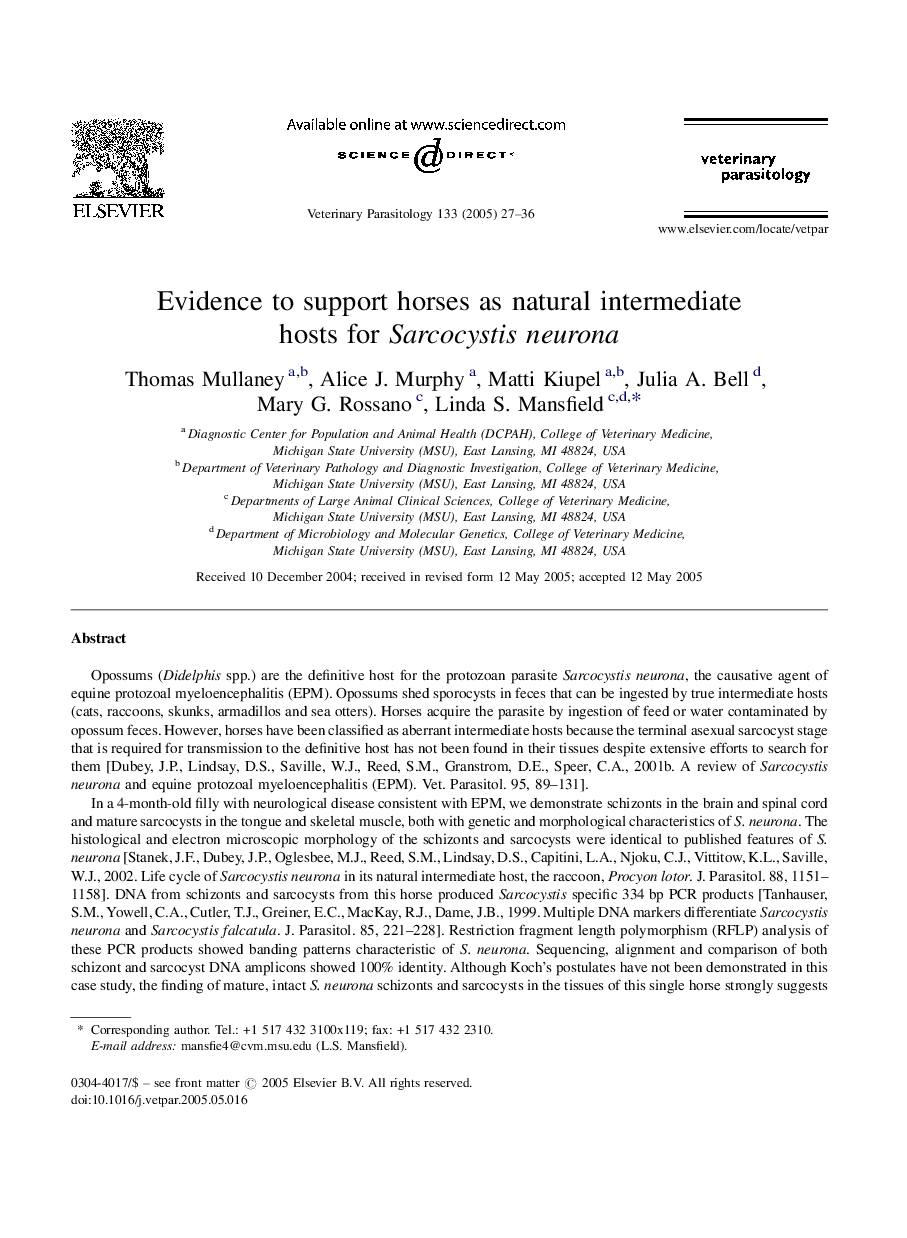| Article ID | Journal | Published Year | Pages | File Type |
|---|---|---|---|---|
| 8990993 | Veterinary Parasitology | 2005 | 10 Pages |
Abstract
In a 4-month-old filly with neurological disease consistent with EPM, we demonstrate schizonts in the brain and spinal cord and mature sarcocysts in the tongue and skeletal muscle, both with genetic and morphological characteristics of S. neurona. The histological and electron microscopic morphology of the schizonts and sarcocysts were identical to published features of S. neurona [Stanek, J.F., Dubey, J.P., Oglesbee, M.J., Reed, S.M., Lindsay, D.S., Capitini, L.A., Njoku, C.J., Vittitow, K.L., Saville, W.J., 2002. Life cycle of Sarcocystis neurona in its natural intermediate host, the raccoon, Procyon lotor. J. Parasitol. 88, 1151-1158]. DNA from schizonts and sarcocysts from this horse produced Sarcocystis specific 334Â bp PCR products [Tanhauser, S.M., Yowell, C.A., Cutler, T.J., Greiner, E.C., MacKay, R.J., Dame, J.B., 1999. Multiple DNA markers differentiate Sarcocystis neurona and Sarcocystis falcatula. J. Parasitol. 85, 221-228]. Restriction fragment length polymorphism (RFLP) analysis of these PCR products showed banding patterns characteristic of S. neurona. Sequencing, alignment and comparison of both schizont and sarcocyst DNA amplicons showed 100% identity. Although Koch's postulates have not been demonstrated in this case study, the finding of mature, intact S. neurona schizonts and sarcocysts in the tissues of this single horse strongly suggests that horses have the potential to act as intermediate hosts. Further studies are needed to demonstrate Koch's postulates with repeated transfer of S. neurona between opossums and horses.
Keywords
Related Topics
Life Sciences
Agricultural and Biological Sciences
Animal Science and Zoology
Authors
Thomas Mullaney, Alice J. Murphy, Matti Kiupel, Julia A. Bell, Mary G. Rossano, Linda S. Mansfield,
